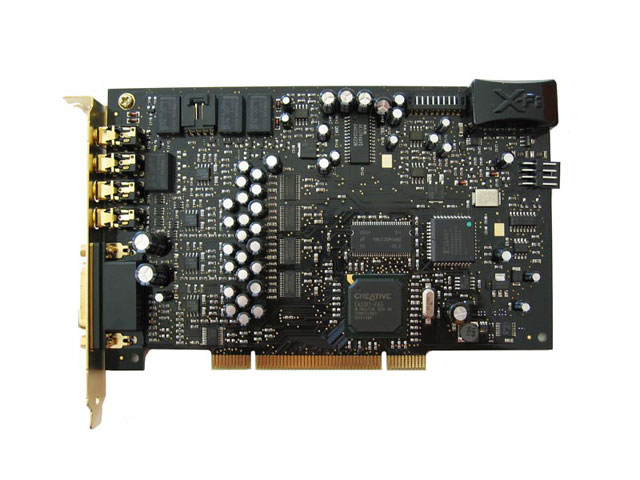Creative Sound Blaster X-Fi Preview
The Creative X-Fi processor can remix and remaster audio on the fly to improve the sound quality of your movies, games, and music.
The rising popularity of PC host audio has been troubling for discrete, add-in sound card manufacturers. Most of today's motherboards come standard with built-in sound that's sufficient for basic gaming and media playback. Why buy a sound card if my motherboard can already handle game audio, right? Sound card pioneer Creative Labs has taken the host audio challenge in stride and intends to make sound cards relevant again with good old-fashioned innovation. Creative's new X-Fi Xtreme Fidelity audio processor promises to dramatically improve the sound quality of already existing movies, games, and music--just install the card and hear the immediate upgrade over regular built-in PC audio.

Creative plans on using all that processing power with two new, power-hungry audio processing technologies: the 24-bit Crystalizer and CMSS-3D. Creative's 24-bit Crystalizer technology is designed to address the basic problem of a fancy 24-bit sound card going to waste when the CD and MP3 audio input quality is only 16 bit. Creative's solution is to transform that 16-bit stream into full 24-bit audio by analyzing the data and restoring all the information that was originally removed when the audio was compressed to 16 bit in the studio. Granted, the restoration isn't perfect, but we know enough about the studio compression process to intelligently bring back the missing highs and lows, and return some texture to the midrange.
After using the X-Fi to listen to audio with the 24-bit Crystalizer, we will have a very hard time going back to plain old 16-bit, 44.1kHz. We listened to several MP3s and CDs using the 24-bit Crystalizer and songs did sound much better with it enabled--like having the equalizer settings optimized, but much better. The 24-bit Crystalized songs became more vibrant, and disabling the feature felt like we were crippling the audio. The X-Fi menu lets you enable or disable the Crystalizer, and there's also a slider setting that lets you adjust the degree of the effect (we kept ours pegged at 100 percent).
CMSS-3D works with headphones, two-channel speakers, and multichannel speaker setups. CMSS-3D is actually a collection of several different algorithms, since the listening experience varies greatly between speaker setups, even between a pair of headphones and a pair of speakers. The CMSS-3D headphone algorithm uses HRTF filters and simulated room reflections to create a surround-sound effect from a stereo output. CMSS-3D does the same for a two-speaker system (without the virtual room reflections), but if you already have a 5.1 speaker system, CMSS-3D can upmix a stereo recording up to six channels to make sure your speaker system doesn't go to waste. Creative is also currently developing X-Fi-branded speakers and headphones that will have built-in X-Fi technology that can process normal, incoming audio streams and enhance audio on the fly.
Creative will launch the Sound Blaster X-Fi line with four products:
Borrowing a page from the graphics manufacturer playbook, Creative will make the X-Fi chip available to other hardware manufacturers, including other sound card companies. Selling the chip to other manufacturers will help make up for development costs and increase the number of X-Fi-enabled devices available in the market. Creative expects to ship the first X-Fi Sound Blaster products later this month on August 22, 2005.
Got a news tip or want to contact us directly? Email news@gamespot.com
Join the conversation